Lifeboats on cruise ships have come a long way in the last 20 years. In fact, modern safety features across the board have made huge strides that most people don’t even know about.
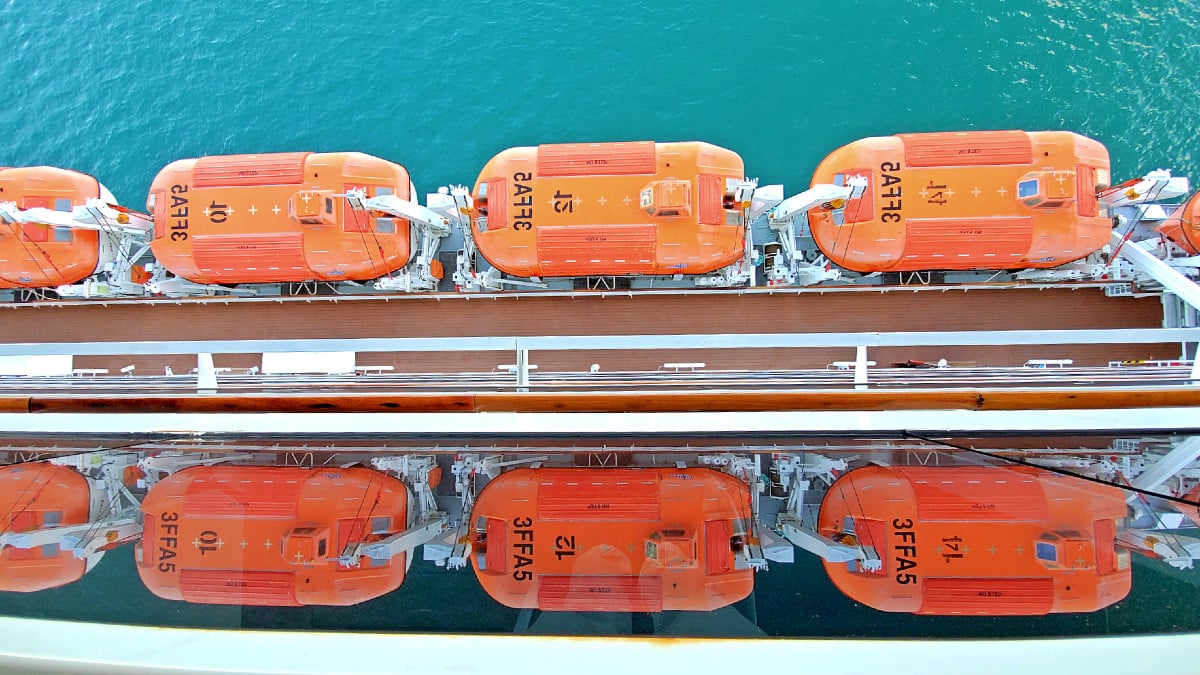
After all, when on a cruise ship, enjoying an amazing vacation at sea, who really thinks about worst case scenarios?
Most passengers are more concerned about a potential view being blocked by a lifeboat hanging off the side of the ship rather than what those bright orange boats do in the first place.
And yes, the internet is chalk full of fear-mongering articles about lifeboats. Some will say there aren’t enough for everyone. Others will use “clickbait” on YouTube thumbnails that will make would-be first-time cruisers more hesitant to hop on a ship.
Here’s the good news: cruise ships are built with safety as the top priority. Instead of dwelling on worst-case scenarios, let’s dive into the fascinating world of cruise ship lifeboats.
One of the first things you should do when you first board your cruise ship is to find your muster station so you can complete the e-muster drill that is required before the ship can leave port.
Hopefully, these fun facts will help enlighten that entire muster drill experience.
Here are 10 surprising facts you might not know, from hidden features to rigorous testing procedures.
1. Some lifeboats are used as tenders

A tender is a boat that takes cruise passengers back and forth from ship to land. These boats are used in ports of call where the ship cannot dock and must drop anchor offshore.
I’ve had the chance to take a ride in a lifeboat tender many times. In fact, on a recent cruise with Celebrity Ascent, the co-captains (the Kafetzis brothers) actually had a little race along side the ship as Celebrity debuted its brand-new vessel.
And yes, those boats can move faster than you think.
Now, that’s something the average cruiser won’t get to experience, but it did give me a lot of insight into what these little life-savers are capable of.
Lifeboats that you see hanging off the side of the ship that have no windows along the full length are not usually the ones used as tenders. Tender lifeboats are much more spacious and will often have padded seating (with some cruise lines).
Of course, in the case of an emergency, these vessels will be much more cramped as they will be filled close to maximum capacity.
2. The capacity of lifeboats has changed
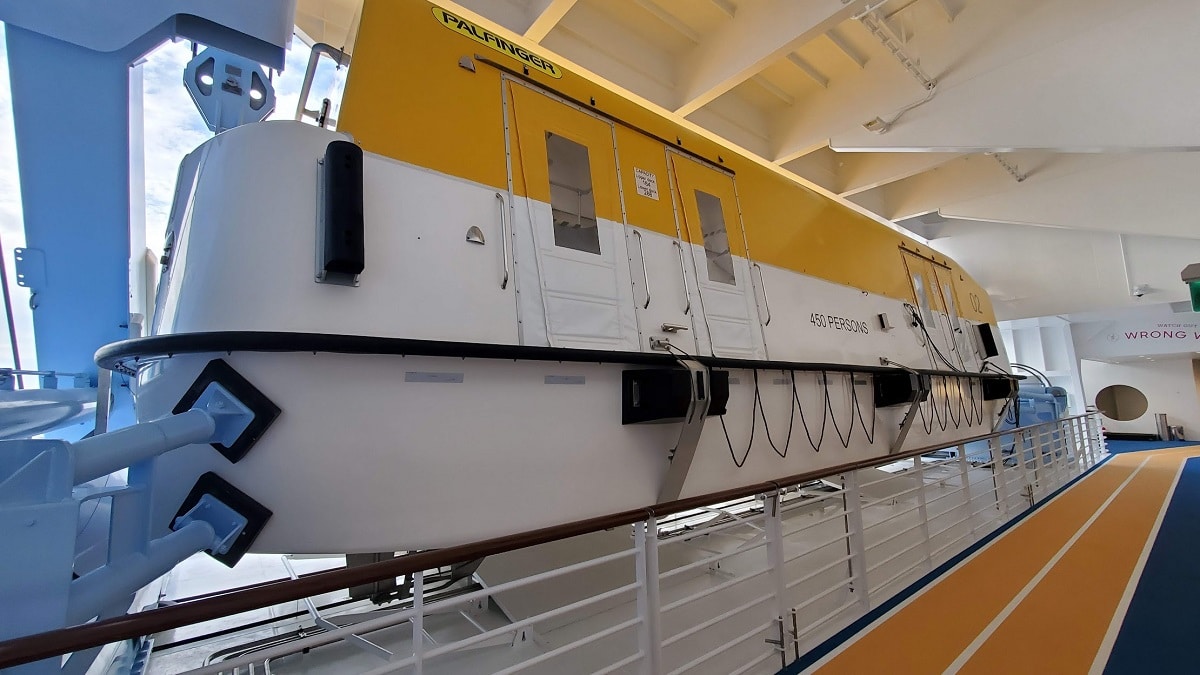
How many people can fit in a lifeboat? That number has changed over the years.
The 150-person capacity for lifeboats was originally set by the IMO (International Maritime Organization) in the SOLAS (Safety of Life at Sea) code 4.4.2.1.
Many lifeboats on today’s modern cruise ships will hold 300 people.
And now with larger cruise ships with passenger capacity’s pushing over 7,000, exceptions have been made for these behemoth vessels like Oasis-class ships from Royal Caribbean.
The 370-capacity Schat-Harding CRW55 was introduced on Oasis of the Seas, which allowed the ship to carry 18 lifeboats.
Royal Caribbean’s Icon of the Seas carries lifeboats with an even greater capacity of 450 people.
3. There are enough lifeboats and life rafts for EVERYONE
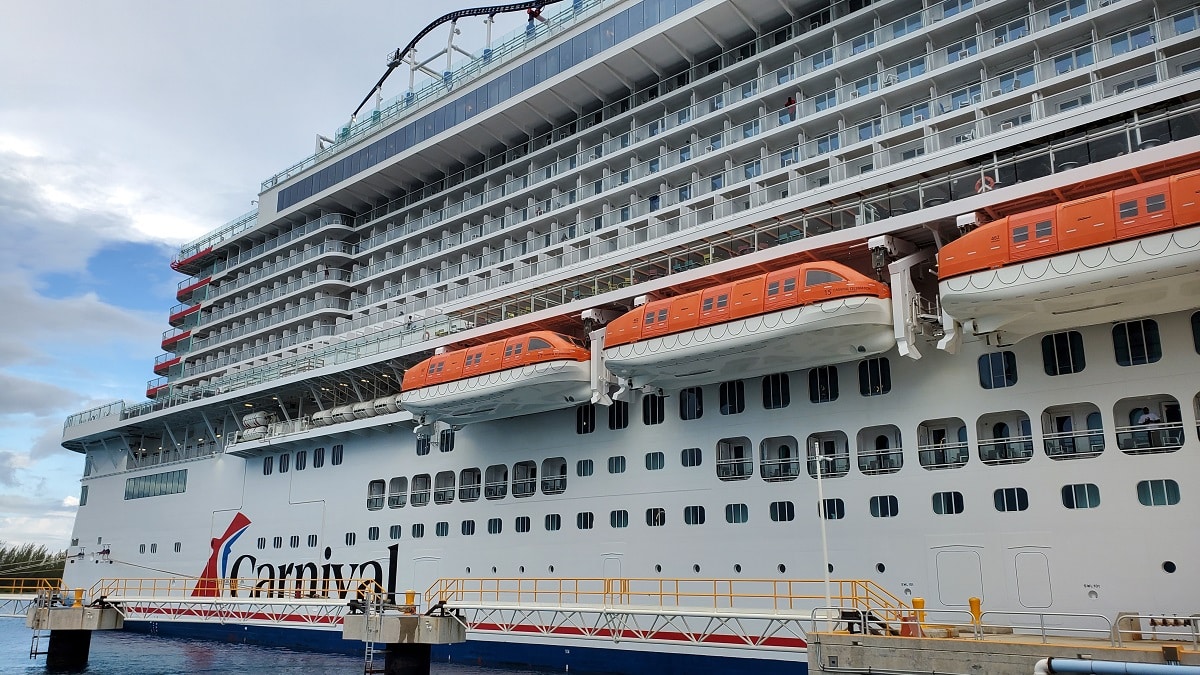
This really shouldn’t be a “surprise” but if you read certain headlines on social media you might be surprised to know this.
It’s a topic that clickbait articles like to use, saying that “there aren’t enough lifeboats for everyone” on a cruise ship.
And if you’re doing the math yourself you might come to the same conclusion.
But this fear tactic overlooks some very important facts.
First, cruise ships do not usually ever sail at true maximum capacity. This would mean every bed (including lower berths) is filled.
Most cruise ships sail closer to just above double-capacity numbers, which includes two people per cabin.
Also, while almost every passenger will typically have space in a lifeboat even near maximum capacity, there are also life rafts on board.
These inflatable life rafts are mainly used for the crew in case of emergency, but they also offer more than enough space for extra passengers as well.
A SOLAS law requires enough lifeboats for 75% of passengers (37.5% on each side of the ship). But there must be enough lifeboats and life rafts for 100% of passengers, which means the remaining 25% can be inflatable life rafts.
These life rafts are kept in circular drums on the side of the ship. They use a hydrostatic release system that automatically inflates when they hit the water.
Note: Even though life rafts are mainly for the crew, each lifeboat will also have crew members in them to help cruise passengers with supplies, food, and overall organization.
The number of crew in each lifeboat will vary. There could be anywhere from 10 – 18 crew members depending on the capacity of the lifeboat.
Read more: Top 5 cruise lines with the most capacity (total berths)
4. The color of some lifeboats has changed

Historically, lifeboats have been bright orange. This bold color would allow the boats to be more easily spotted in a vast ocean.
International maritime safety regulations emphasize the importance of lifeboats being as visible as possible.
But Disney Cruise Line wasn’t a fan of this color, as it contrasted with their brand’s color scheme.
Thanks to approval from the U.S. Coast Guard, Disney was allowed to paint its lifeboats bright yellow, affectionately known as Pantone 99.
Since then, Royal Caribbean has adopted yellow as its lifeboat color of choice for ships in the fleet (except for Vision and Sovereign-class ships). Costa Cruises also has yellow lifeboats.
5. Lifeboats can be launched even with 20-degree listing
It’s important for a lifeboat to be launched in all kinds of conditions. 20-degrees is a significant tilt for such a large vessel.
But even in this circumstance most cruise ships can still launch their life saving vessels.
Special launch systems like adjustable davits and self-balancing winches allow lifeboats to be lowered safely. Lifeboats themselves are designed to bob upright upon water entry.
Some davits may also have counterbalancing mechanisms to help manage the weight of the lifeboat during launch on an incline.
Video tour of cruise ship lifeboat
6. All aspects of these boats are tested regularly
Before a lifeboat is even installed on a cruise ship it goes through rigorous testing. This includes filling the boat with water weights to mimic the weight of passengers and making sure the lifeboat can handle various loads and weight distribution, among other things.
If you’ve taken many cruises you’ve probably noticed the crew take a lifeboat or two for a spin while your ship was in port.
This isn’t just a joy ride. It’s to make sure the engines are still operational and the vessels as still seaworthy.
Lifeboats go through weekly and monthly inspections. The crew check for damage or improper equipment function when running through these regular tests.
Life rafts are not tested by the crew but are periodically sent to facilities for inspection as they are sealed in drums on the ship and not easily accessible.
Even the equipment on board the lifeboats are inspected. Food rations, batteries, signal equipment, and first-aid kits are inspected for quality to make sure everything is operational in the event of an emergency.
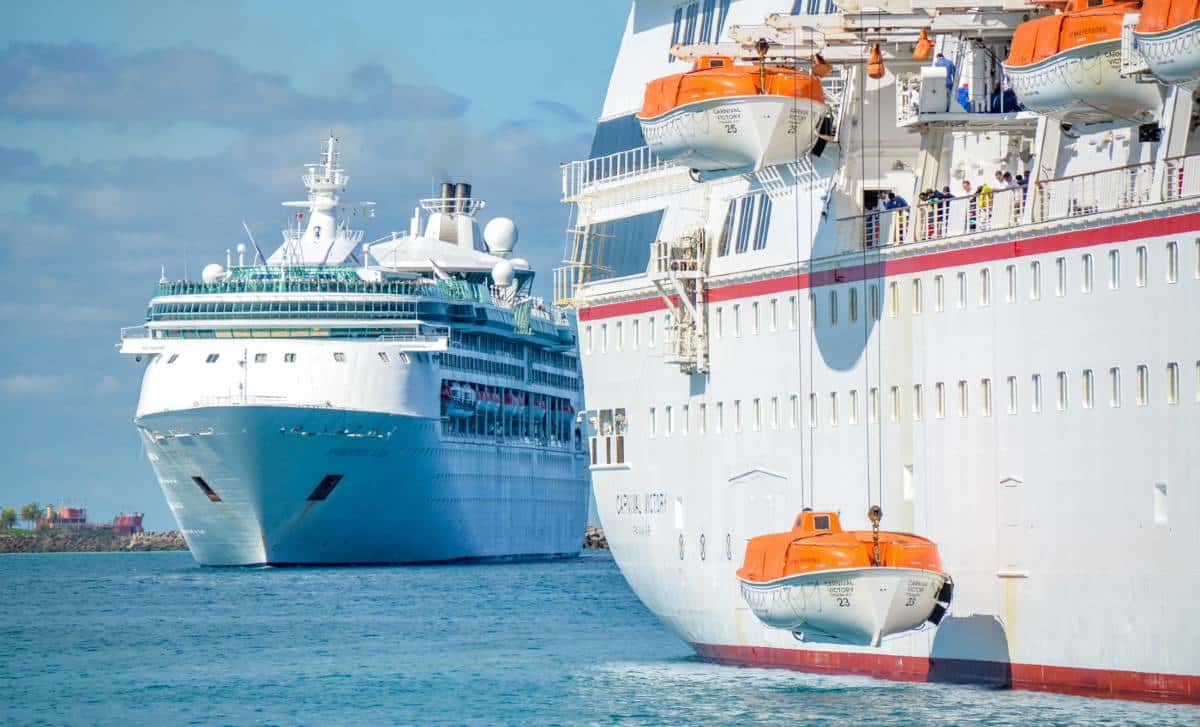
7. Each boat has an assigned commander who drives
Not everyone on a cruise ship can drive a lifeboat. It takes a special certification that involves classes, written exams, and practical tests on the water.
The person in charge of driving a particular lifeboat (the boat commander) is often determined by their position on the ship, rather than who currently holds that job title.
There is also a second in command who will drive if the boat commander is not available.
Also, launch teams are assigned to each boat who are in charge of operating the hooks and pulleys and will lower the boats into the water.
All of this training goes on behind the scenes with most passengers completely unaware of the safety protocols in place.
8. There’s enough food and water for at least a week
In any emergency situation in which a lifeboat is used the goal is to be rescued as quickly as possible. But if the rescue takes longer than expected there is enough fresh water and food on board to ensure survival for at least a week.
Many cruise ships have enough water for about half a liter of water per person per day and also a box of high-calorie dry biscuits (about 270 calories per bar). These ration biscuits have an extremely long shelf-life and can be eaten without any preparation, making them the perfect survival food that is jam packed with calories.
No, it’s not the kind of gourmet food you may find in the main dining room, but again, the point here is survival.
Read more: 10 biggest things that can ruin your cruise if you let them
9. Seasickness medication is available on lifeboats
Large cruise ships are very stable and barely move at all in relatively calm weather. The same cannot be said of lifeboats.
These smaller vessels do their fair share of bobbing up and down and back and forth in even minimal waves.
This is why every lifeboat also comes equipped with motion sickness medication for every person on board. In fact, upon entering a lifeboat every person will be given motion sickness tablets along with a bag in case anyone gets sick from all of the rocking.
What other kinds of equipment and essentials can be found in a lifeboat?
- Fishing tackle
- Sea anchor (to slow the boat or stay in one position)
- Thermal protective blankets and aids
- First-aid kit
- Can opener
- Rope and rope ladder
- Smoke floats
- Rockets and hand flares to for better visibility
- Compass
- Fire extinguishers
- Flashlight and batteries
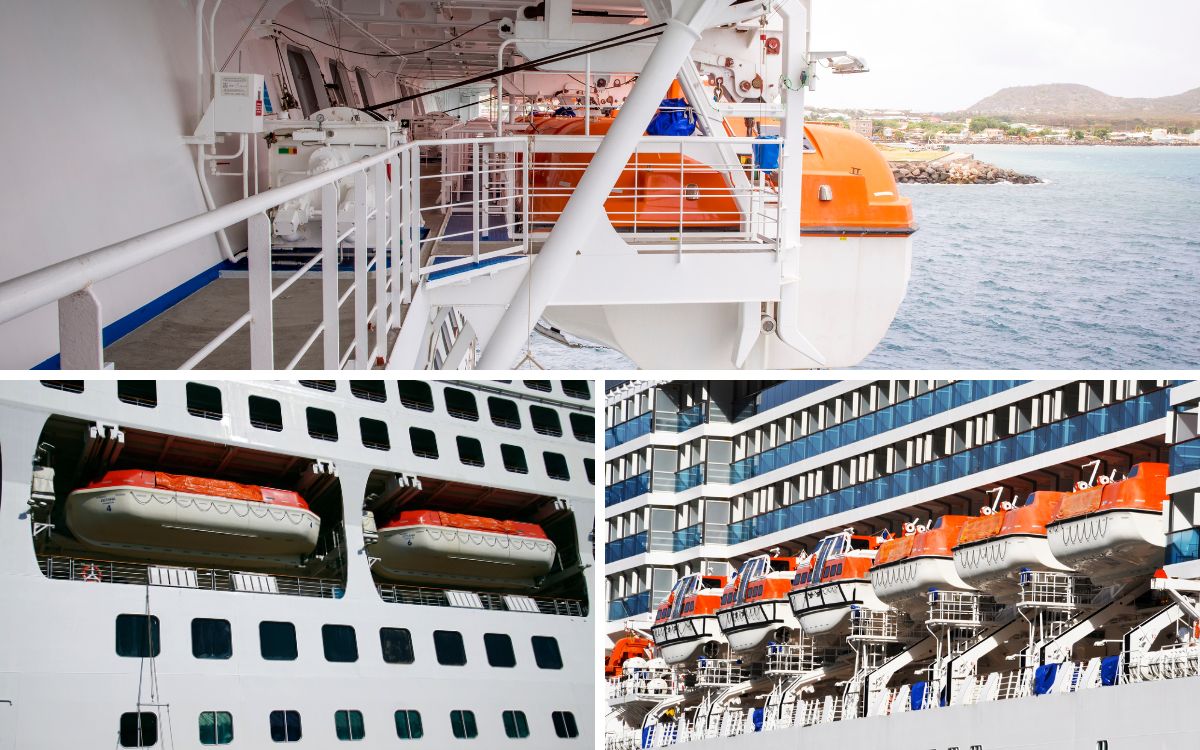
Read more: 35 genius cruise items on Amazon for under $15 (mostly)
10. Some lifeboats have bathrooms
People often ask if cruise ship lifeboats have toilets. And while historically the answer has been no, some modern lifeboats do have a bathroom.
It should be noted that the primary purpose of a lifeboat is to keep you alive. These aren’t cushy and comfortable pleasure vessels. They are used in emergencies to help ensure your safety.
But when Oasis of the Seas debuted in 2009, she also debuted a new concept in her 370-passenger lifeboats: a toilet. While the idea of sharing a bathroom with several hundred people isn’t a brochure-worthy concept, it’s presumably better than nothing.
Final Thoughts
While we hope that no one reading this ever has to use a lifeboat in an emergency situation, at least now you have some useless knowledge to throw around at the dinner table in the main dining room.
And you can rest at ease knowing not only are there enough lifeboats and life rafts for everyone on board, but that the crew is vigilant in making sure this equipment is kept in working order.
Read more: 15 DUMB things people still believe about cruise ships
Learn the cruise secrets most people don't know and cruise like a boss. Check out Intelligent Cruiser here for a better cruise vacation. (Sponsored)



